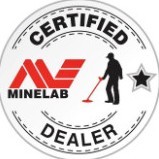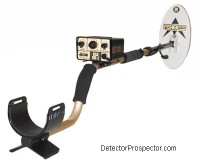
This is my latest "Nugget Detector Guide", now published for over twenty years, updated January 2024 with some of the latest model information. Each model has a short description, followed by a very PERSONAL OPINION. Copyright 2002-2024 Herschbach Enterprises - Please do not reuse or repost without my express permission.
This is offered as a simple guide for those wanting a comparison of the various nugget detectors available new with warranty, along with some kind of real opinion about them. That's all it is, folks, so take it or leave it for what it is worth. It's just that listing specs is of little help to people, and so I take my best stab at providing some guidance for those newer to detecting. These are only my opinions based on my experience with various detectors over the years. While I do have a lot of experience, I must throw in the caveat that I have not used all detectors under all conditions. What may be considered a good detector at one location may not be so good at another location due to differences in ground mineralization and the gold itself. Detector performance is site specific and so your mileage may vary. Never forget that when reading comparisons on the internet.
Although many detectors sold today can potentially find gold nuggets, I've chosen to only list current models from major manufacturers that are sold and marketed primarily as prospecting detectors or that at least have a specific prospecting mode. I no longer list general purpose VLF detectors running under 18 kHz because they are too common and that being the case they offer nothing special to the potential gold prospector. If you are interested in other general purpose detectors that might make good prospecting machine but are not listed here, look at my more comprehensive reviews list. Many discontinued prospecting detectors are also listed there.
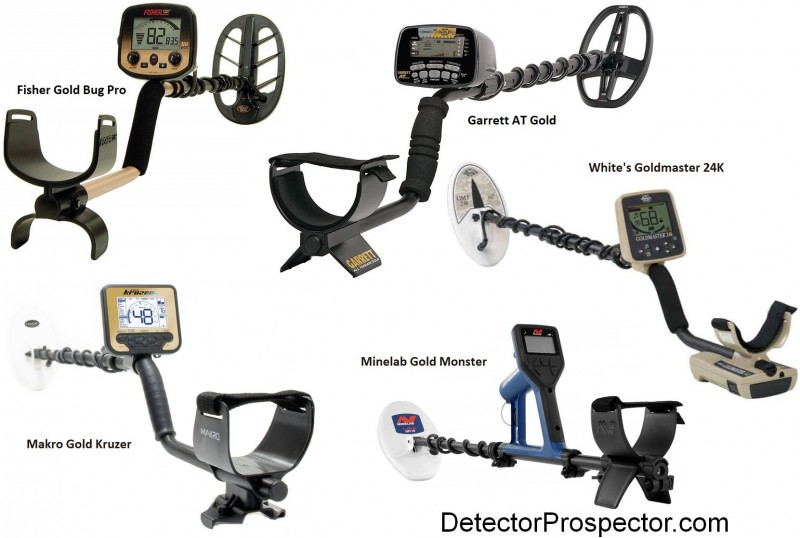
Various popular VLF gold nugget prospecting metal detectors
Please, if you own one of these detectors, and I call it like I see it, don't take offense. Any nugget detector made will find gold in capable hands, and the owner is far more important than the detector model. I'll put a good operator with almost any detector on this list up against a novice with whatever is deemed "best" and bet on the experienced operator every time. The person using the detector finds the gold. The detector is actually one of the less important factors in nugget detecting success or failure.
A quick note to those who know nothing about these machines. These are metal detectors. There is no such thing as a "gold only" detector. These detectors will also find lead, copper, aluminum, and other metals. These units are best used to look for relatively larger pieces of gold at relatively shallow depths. Concentrations of gold dust are not detectable. Some of these units can hit gold that weighs as little as a grain (480 grains per ounce) or less but only at an inch or two. Only the larger nuggets can be found at depths exceeding a foot. Only world class nuggets weighing many ounces can be detected at over two feet. The vast majority of nuggets found are found at inches, not feet. About Long Range Locators (LRLs)
WARNING ON COUNTERFEIT DETECTORS - The market for nugget detectors far outsells coin and relic detectors worldwide, with huge sales in third world countries. This has made many of the models below very popular with counterfeiters. Here are some Fisher and Minelab examples. If you shop these models there are two simple rules. First, you are safe if you stick with approved dealers. Second, if the price seems too good to be true, beware! All legitimate dealers have a limit on how low they can advertise, the Minimum Advertised Price (MAP). Review prices at the approved dealer list, and if you find the detector advertised as new at a significantly lower price by somebody not on the list, the odds are very high you are looking at a counterfeit detector. Legitimate dealers are prohibited from advertising at those kind of prices, and a price too good to be true is your number one warning you are about to be ripped off.
The detectors are listed in order based on the lowest price normally advertised on the internet as of the date below.
Steve's Guide to Gold Nugget Detectors - Updated January 2024
Before I start, a quick note about recent events in the metal detector industry. A few years ago we lost a major manufacturer in the form of Tesoro. That lead to the Tesoro Lobo SuperTRAQ being dropped from this list. 2020 saw one of the true industry stalwarts fall by the wayside. White's Electronics was acquired by Garrett in October of that year. I am therefore dropping the White's nugget detectors from this list as no longer available new with warranty. For now, see my detailed reviews for information on White's models.
Bounty Hunter Time Ranger Pro / Fisher F19 ($399, 19 kHz) - This detector is a later, more advanced version of the Fisher Gold Bug Pro (see below), with added features. There is an excellent threshold based all metal mode plus a dual tone discrimination mode. The F19 has both ground grab and manual ground balance, plus adjustable tone break, just like the Gold Bug Pro. Extra features are added to enhance the coin, relic, and jewelry capability, such as notch discrimination with adjustable notch width, volume control, separate ferrous tone volume, and a LCD meter backlight. These extra features may even find use while gold prospecting. The Fisher F19, and the Bounty Hunter Time Ranger Pro, can use any Gold Bug compatible coils plus those made for the Teknetics G2 series, providing for a huge number of possible accessory coils. This detector can be had with several stock coil options, including a 7" x 11" DD coil, or 5" x 10" DD coil. Weight including a single 9V battery is 2.6 lbs.
Steve's Opinion - If you can afford it, look at other options below. If you want the lowest price detector worth even looking at for nugget detecting, you can look no farther than here at $399 (or less). First Texas, the manufacturer of Bounty Hunter, Fisher, and Teknetics metal detectors, sells quite a few identical or near identical metal detectors under different brand names and model names. Due to oddities in their marketing scheme, some more powerful models are often available at lower prices than other less capable models. Currently the 19 kHz Gold Bug name carries a premium price, while other identical or more capable models, sold under other names, can often be had for less money. That is currently the case with the 19 kHz Fisher F19 models, and the identical Bounty Hunter Time Ranger Pro model. The bottom line is this. If you can find a BHTRP/Fisher F19 with 5" x 10" elliptical coil for under $500 at a legitimate dealer (see counterfeit note above) it is easily my current recommendation for an extremely capable, entry level, VLF nugget detector with general purpose capabilities. I recommend this detector over the Fisher Gold Bug and Gold Bug Pro models below, not only because of the extra capability, but because it can be had stock with the 5" x 10" DD coil, the best general nugget hunting coil for the FT 19 kHz series. It can only be had as an accessory coil on the Gold Bug models, driving their out of pocket cost even higher.
Nokta Gold Kruzer ($549, 61 kHz) - Nokta/Makro started shipping the new Gold Kruzer model in June 2018 and with a change in the company name is now simply the Nokta Gold Kruzer. The Gold Kruzer is a variant of the old Makro Gold Racer that has been boosted to 61 kHz from 56 kHz and put in a waterproof housing good to 5 meters (16.4 ft). The Gold Kruzer comes with a 10" x 5" concentric coil and a 4" x 7.5" DD coil. The weight including LiPo batteries is 3.0 lbs. There are four coils available for the Gold Kruzer.
Steve's Opinion - The Makro Gold Racer was one of my favorite detectors because until recently there was nothing running in this frequency class that had full target id and other options normally seen only in coin detectors. The Gold Kruzer takes it all to the next step by being waterproof in excess of ten feet. There are no other detectors running at a frequency this high that are fully submersible with built in wireless capability and therefore this detector may find favor with freshwater jewelry hunters as well as prospectors. The Gold Kruzer is worth keeping an eye on, and is a better value than it appears at first glance due to the dual coil packaging. 2024 Note: The Gold Kruzer has been reduced in price from over $600 to only $549 which seriously upsets the cart. This is an incredible value for what you get and well worth consideration.
Fisher Gold Bug Pro ($599, 19 kHz) - Essentially the same as the Gold Bug above with the addition of manual ground balance. The target ID makes the Gold Bug Pro good for more than just nugget hunting, and it will find favor with jewelry and relic hunters. The manual ground balance gives expert operators the control they desire to get the best depth possible. This unit normally comes with a 5" round DD coil to enhance the sensitivity to small gold but other standard coil packages are available. Weight including a single 9V battery is 2.5 lbs. Many accessory coils are available for the Gold Bug Pro.
Steve's Opinion - The Pro is the final version in this series which saw several early variations including the Gold Bug above. It is a excellent choice for prospecting, relic, or jewelry detecting and does fine as a coin detector also. However, you are now paying a premium for the Gold Bug name, and the more capable Fisher F19 at the top of this list can be had in a better configuration at a much lower price. The Nokta. Unless you just want the name, pass.
XP ORX ($599, 14, 28, 56, 80 kHz) - The XP ORX emphasizes gold prospecting and coin detecting in the promotional material. The XP ORX appears to be a version of the "Africa only" Depar DPR 600 made for sales in Europe, the U.S., and elsewhere. The ORX has been refined from that early effort by the addition of the ability to use the new X35 coils.
Steve's Opinion - The XP ORX went through some teething pains with coils before settling into its final role as XPs gold nugget detector. I think the ORX is a great little nugget hunter personally (I love the compact design), but it seems to be overlooked my most serious prospectors, and getting more attention as a low cost alternative to the XP Deus for coin and relic detecting. The new lower price makes the ORX a serious contender, a big step up in capability from the Fisher 19 kHz models above, and a little less money than the Garrett 24K below for a more full featured detector.
Garrett AT Gold ($639, 18 kHz) - The AT Gold was a totally new concept in metal detecting from Garrett Electronics when it was introduced. This full featured detector has everything you would expect from a dry land detector - LCD display, full control set and functions, speaker, interchangeable coils, and lightweight. But it is submersible to 10 feet! Even the speaker is waterproof. Note that the unit itself may be submerged but if you want to put your head underwater you will need optional submersible headphones. Weight including a four AA batteries is 3 lbs. The stock coil is a 5" x 8" DD elliptical. Many accessory coils are available for the AT Gold.
Steve's Opinion - The Garrett AT Gold was an innovative concept when it was introduced, and was the only waterproof nugget detector option at the time. The nugget hunting world has moved past the AT Gold now, and unless it comes down in price it's hard to recommend for somebody interested primarily in a nugget detecting VLF. Only for Garrett fans really, and even then more for the relic hunting crowd. For a much better option, see the Garrett Goldmaster 24K below or one of several less expensive models above, like the Nokta Gold Kruzer.
ads by Amazon...
Garrett Goldmaster 24K ($679, 48 kHz) - The Garrett Goldmaster 24K is a reintroduced version of the White's Goldmaster 24K, the sole model that Garrett has continued to manufacture after purchasing White's. This is due to it being the latest in VLF nugget hunting technology, with a perfect balance of features for advanced nugget hunters, yet ease of use for beginners. All this in a well balanced, weatherproof package, with good accessory coil support. Better yet, Garrett went through the design from top to bottom, vetting the electronics, and in particular, upgrading the coils for better performance and reliability. The weight including 8 AA rechargeable batteries is 3.4 lbs. The 24K comes stock with a 6" x 10" elliptical coil with scuff cover included. An excellent 6” round concentric is available as an option.
Steve's Opinion - White's Electronics went out of business in 2020, and was purchased by Garrett Metal Detectors. This makes Garrett now one of only two remaining U.S. metal detector manufacturers. I place them at first place in that role, due to the overall consistency of their existing product line, now augmented by the White's purchase. The White's line will be largely dropped as out of date for today's market. However, the last White's model produced, the Goldmaster 24K, is a superior product, and extremely competitive in its class. I personally had settled on it as my preference over other 30 kHz plus dedicated prospecting detectors, due to the overall physical design, tuning options, and affordable coil selection. The 24K is my personal VLF gold nugget hunter at this time but I have to admit that there are good reasons to consider the Nokta Gold Kruzer and XP ORX also due to recent price decreases from XP and Nokta.
Fisher Gold Bug 2 ($799, 71 kHz) – The Gold Bug 2 is the highest frequency detector on the market, for extreme sensitivity to the smallest gold nuggets. In moderate to low mineral conditions, no detector will pick up a smaller nugget than the Gold Bug 2, especially if it is paired with its 6.5” accessory coil. The lightweight and tough hip mountable design is great for rough terrain. The Gold Bug 2 is a manual ground balance unit. Weight including two 9V batteries 2.9 lbs. The unit can be purchased stock with either the 10" elliptical coil or 6.5" elliptical coil, or both. Two accessory coils are available for the Gold Bug 2.
Steve's Opinion - An excellent example of a niche machine that excels at one task. The Gold Bug 2 has extreme sensitivity to small gold combined with what I feel is one of the best physical designs of any nugget detector on the market. The Gold Bug 2 is lightweight, tough, and convertible from rod mount to chest or hip mount. Its main drawback is that it is harder for beginners to learn than newer units since it has no automatic ground tracking or ground "grab" options.. But if mastered and paired with the small 6" coil the Gold Bug 2 is a superb small gold machine. The Gold Bug 2 has a particularly effective "Iron ID" mode that not only rejects iron targets but many iron hot rocks. I consider my Gold Bug 2 my "go to" detector if I simply want to find some gold. I can hit tiny pieces weighing less than 1/10th grain with the 6" coil. 8/2021 Note: The Gold Bug 2 has just been reintroduced with a LCD screen displaying the ground balance setting, but is still the same detector, just with a control update. Still a great old machine, a classic really, and holds it's own with the best made today.
Minelab Gold Monster 1000 ($999, 45 kHz) – The Minelab Gold Monster 1000 came out in 2017. The model is replaces the Minelab Eureka Gold as a much lighter and less expensive detector. Main features are a hot 45 kHz frequency combined with automatic ground tracking and even an automatic sensitivity option. The Minelab Gold Monster comes with a 5" round DD coil plus rechargeable and standard AA battery packs (AA batteries not included).
Steve's Opinion - I have been a little surprised how I took to the Gold Monster 1000. This has been based more on its grab and go simplicity than anything else. It has excellent sensitivity to small gold and and dual coil package for a good price. The main issue for beginners is to resist over-driving the sensitivity which can lead to false signals. The big selling point for the Gold Monster is the minimum control set and almost totally automatic operation. Some professionals however may chafe at the lack of audio threshold and the very same limited amount of control that appeal to others. I’m personally do not like the screw together rod at all, a stand out flaw for an otherwise excellent detector. Still, the ease of operation is a huge plus for beginners, and this has made the Monster a very popular option.
ads by Amazon...
Minelab Equinox 800 ($999, 5, 10, 15, 20, 40 kHz plus Multifrequency) – The Minelab Equinox 800 has just been released and is only now becoming available in quantity. It includes a dedicated Gold Mode with up to 40 kHz operation and offers the first true multifrequency nugget detecting capability.
Steve's Opinion - The Minelab Equinox 800 has excellent sensitivity to gold nuggets in mineralized ground. I have been very impressed with what I have been able to make the Equinox do as a gold prospecting detector. The stock 11" coil is less than ideal for nugget detecting, being knock sensitive under some conditions, but the new optional 6" x 10" coil is proving to be very stable, and has great sensitivity to very small gold. I am not recommending all prospectors run out and get an Equinox per se. It is primarily a general purpose detector, and its settings and operation will be foreign to many experienced nugget hunters. However, if you want a very capable general purpose detector, that is also quite capable at finding gold nuggets, the Minelab Equinox is a proven choice. In the right hands, a case can be made for it being a superior nugget detecting option, despite the caveats I've mentioned. Equinox nugget detecting tips.
A note on Pulse Induction (PI) detectors. Pulse induction detectors are a more powerful option for prospectors compared to the models above. Their main advantage is the ability to handle highly mineralized ground and hot rocks more effectively than the induction balance detectors listed above. Unfortunately PI detectors have rudimentary discrimination compared to VLF units. It is best to view PI units as all-metal, dig-it-all detectors. They do have some limited discrimination capability, but it is not why you get a PI unit. Depth in extreme mineralized ground and an ability to ignore difficult hot rocks are the selling points. In addition, some PI units have poor sensitivity to small gold compared to VLF units, and so someone with less expensive VLF unit can run circles around someone with a PI unit at low mineral locations. I tend to consider PI units as elephant hunting guns, best used when larger nuggets are known to be lurking in an area. New PI detectors like the SDC 2300 are challenging my perception in that regard however. Some areas demand PI detectors regardless of gold size due to extreme mineralization and/or hot rocks. My basic recommendation for most people is use a VLF when you can, and use a PI when you have to. You first clue to when this will be is when you can't get your VLF to work properly due to ground and hot rock conditions. In much of the US a good VLF is perfectly suitable and often a better choice than a PI. However the western US and most of Australia have places where a PI is an absolute necessity.
Garrett ATX ($2120, Pulse) - This model takes the AT series to a new level with pulse induction. It features an extremely compact military grade housing submersible to 10 feet. Even the built-in speaker is waterproof. Note that the unit itself may be submerged but if you want to put your head underwater you will need optional submersible headphones. The ATX features a unique collapsible/folding design for stowing and backpacking. It is powered by eight AA batteries. The ATX comes with a newly designed 10" x 12" DD coil and weighs 6.9 lbs. Four accessory coils are available.
Steve's Opinion - The ATX is a very versatile detector, and fully capable of almost any task a person wants to use it for. The ATX is a superior beach detector, and the least expensive pulse induction nugget detectors currently available. It is sensitive to gold nuggets weighing as little as 0.1 gram and yet has very respectable depth on larger gold nuggets. I think the ATX has a performance edge over the TDI SL but at twice the price and twice the weight it has not set the prospecting world on fire. The main problem is the heavy waterproof housing driving the price up so high, that in Australia the ATX does not compare favorably to the much more popular Minelab models. In the U.S. it has settled into being most used for beach and relic detecting. At this point unless having a waterproof detector is critical, or you are on a very tight budget, spending the extra money to get the Garrett Axiom below is a far better option.
ads by Amazon...
Minelab SDC 2300 ($3599, Pulse) - This model is unique as Minelabs first waterproof pulse induction metal detector. A key feature is that the detector is physically packaged in the proven F3 Compact military housing that is waterproof to ten feet and folds down into an incredibly compact package only 15.7" long and weighing 5.7 pounds including four C cell batteries.
Steve's Opinion - I have used the Minelab SDC 2300 and I must say I was impressed. The waterproof compact design is perfect for hardcore backpack style prospecting. The main thing however is that the SDC 2300 comes as close to VLF type performance on small gold as you can get while being almost impervious to the ground mineralization, and hot rock issues, that plague said VLF detectors. In fact, the SDC 2300 will find gold nuggets smaller than most good VLF detectors can detect in mineralized ground. The SDC 2300 is also one of the simplest detectors to use and master on the market. The main caveat is that the detector is optimized for small gold with the hardwired coil, and so other ground balancing PI detectors are a better option for large nuggets at depth. It is also nearly twice the price of the Garrett ATX above, and so you are paying quite a premium for a little better performance on small gold. Still, the SDC 2300 is almost impossible to beat for the price, if the goal is just to go find some gold, any gold at all. If the budget allows, however, at this point I would pass, and go to the new Garrett Axiom below, which offers a much more sensible design, with many more coil options, and better capability for larger gold at depth.
Garrett Axiom ($3995, Pulse) - A new pulse induction gold nugget detector, just announced for 2022, available by the end of the year. The Garrett Axion is the first pulse induction nugget detector to truly reflect 21st design options and capabilities. The Axiom is a sleek, modern design, perfectly balanced at only 4.2 lbs with the 11" x 7" mono coil. The detector is fully weatherproof, with waterproof coils. The Garrett Axiom is available in a couple package options, but the most popular will include the 11" mono coil, 13" DD coil, and Garrett Z-Lynk high speed wireless headphones. The Axiom has a perfect balance of controls, giving experts more options than more simplistic designs, while still focusing on only the controls really needed, to keep things easy for beginners.
Steve's Opinion - Well, I have to admit I'm biased on this one. I lobbied Garrett every way possible for almost a decade, to make a detector like the Garrett Axiom. So it is literally a dream come true for me, a powerful pulse induction detector in a really great, ergonomic package, and at a price that won't break the bank, but honestly still more expensive than I was hoping for. I have used the Axiom already enough to know that it is very competitive although it is not that it is the most powerful option available. For that I refer you to the Minelab GPZ 7000 below. The Axiom goes head to head with the GPX 6000 and basically offers 90% of the performance of that machine for two thirds the price.
Minelab GPX 5000 ($3999, Pulse) - This Pulse Induction (PI) unit essentially ignores ground mineralization and most hot rocks. The GPX 5000 is designed specifically for nugget detecting and so it has many adjustments for mineralized ground not available on other PI detectors. The GPX 5000 is the culmination of over 10 years of innovation in pulse induction technology. The GPX weighs 5.3 lbs. not including the harness mounted battery, which weighs another 1.7 lbs. The detector comes with both an 11" round mono coil and 11" round DD coil. Over 100 accessory coils are available for the GPX 5000 (Minelab, Coiltek, Nugget Finder)! And more coils are being released every year.
Steve's Opinion - The Minelab GPX 5000 can at this point be considered the reliable, well proven option, for just about any pulse induction task a person wants to consider. It has found a wide audience not just with nugget hunters, but with beach and relic hunters. This is in large part due to the incredible coil selection. For general nugget hunting however, the GPX 5000 faces new competition in the form of the Garrett Axiom above, for almost the same price. The Axiom is a better package from a physical perspective and more capable than the GPX 5000 on bread and butter small gold nuggets. However for 1/2 ounce and larger nuggets the GPX 5000 still has the edge due to it's superior large coil selection. personally I lean Axiom for the ergonomics but a case can be made for either machine depending on the user.
Minelab GPX 6000 ($6499, Pulse) - The Minelab GPX 6000 is a new pulse induction model that is just now getting into end user hands. The GPX 6000 is exceptionally light and well balanced compared to previous Minelab models, and promises to set new standards for ease of operation. The GPX 6000 weighs 4.6 lbs. and has three coils available at launch, an 11" round mono, 14" round DD, and 17" elliptical mono. The detector has built in Bluetooth wireless headphone capability and quick release Li-Ion batteries.
Steve's Opinion - Minelab beat Garrett to the punch in making a very ergonomic metal detector for the 21st century. The GPX 6000 is an excellent choice for gold prospectors, with out of box sensitivity on smaller gold that exceeds the Minelab GPZ 7000. Sadly, what should have been rave reviews by users, has been muted by persistent issues regarding bad coils and hardware based electrical interference. I admit I feel like I have a little egg on my face, as I raved about the GPX 6000 a lot when it came out since mine had none of the problems that far too many people have been experiencing. Regardless of that, I still think when it is running like it should, the GPX 6000 is a superb detector. The closest competitor is the Garrett Axiom for $2500 less. I do think the GPX 6000 retains a small performance edge over the Axiom but whether it is worth the 50% higher price will depend on the user. The more you use a nugget detector, the less the price difference matters.
Minelab GPZ 7000 ($8999, ZVT) - The new Zero Voltage Transmission technology from Minelab takes gold prospecting to the next level. The new platform represents a break from the past SD/GP/GPX series in more ways than one, with a new weatherproof housing design based on the Minelab CTX 3030. The GPZ 7000 weighs 7.32 lbs. and comes with a waterproof 14" x 13" coil. There is one official accessory coil available at this time, plus one officially sanctioned aftermarket coil, but more are coming as I type. Brave souls can check out numerous hacked Russian coil options.
Steve's Opinion - It's pretty simple. If you want the most powerful metal detector made for finding gold nuggets, get a Minelab GPZ 7000. The GPX 6000, Garrett Axiom, and even SDC 2300 can beat it out of box on the tiniest gold nuggets. But the 7000 will hit stuff plenty small, and more importantly, deliver the goods on the bread and butter gold that matter most to genuine prospectors who want to put weight in their pocket. The difference in small gold capability can be made up with options aftermarket coils, meeting or exceeding what the other models mentioned can do. Yes, it is heavy, and it is expensive, but most really serious gold prospectors are using the GPZ 7000 for a reason - when it comes to sheer performance, it's the best machine for the job.
A Steve's Opinion summary - So maybe all the above is still too much information, too many choices. And you want to ask "what would you do Steve?" Well, I'm not trying to speak for anyone but myself, but here is my current thought on the situation. If you want a really great VLF nugget detector in 2024 at a great price the Nokta Gold Kruzer and XP ORX are standout values at under $600. Both are excellent VLF nugget machines and both can be used for more than just nugget detecting. The Gold Kruzer coming with two coils and being fully waterproof would be my choice.
As far as PI goes for me it's either GPX 6000, or Garrett Axiom. If money is no object and you only ever intend to use the machine for nugget detecting, then the 6000 wins the day. For me I do more than just nugget hunt so I find the Axiom to be a better general purpose PI for my uses, even though I am giving up a small edge on small gold nuggets. If sheer power is all it's about, weight, price, nothing else matters, just performance, I still think a person has to go GPZ 7000. Yeah, for specific situations other machines might be better. Heck, a Gold Bug 2 might be better in the right spot! But overall, if I had to pay my bills with gold found, I'd be using a GPZ 7000.
If I can offer one final word of advice, it would be to pay particular attention to what experienced nugget hunters are using in any particular region. Do not assume you are going to outsmart them, and find some model they have not already tried, and set aside, as less than optimum. Serious prospectors in any particular location will end up focusing on certain units that do the job. In areas of extreme mineralization this is usually a PI detector. In areas with less mineralization and lots of ferrous trash VLF units often are preferred. If you can discover what models the locals prefer, it will give you a head start in knowing what to use yourself. Above all, whatever detector you finally choose, dedicate yourself to mastering it. It takes at least 100 hours of detecting to become proficient with a detector model. Any less, and you are still practicing. Knowing your detector well is more important than what particular model of nugget detector you own.
So there you are. Hopefully this helps some people out. I can be found daily on the Detector Prospector Forums and would be pleased to answer any questions you have on metal detecting and prospecting. Also check out Steve's Guide to Metal Detecting for Gold Nuggets.
Sincerely,
~ Steve Herschbach
Steve's Mining Journal
Copyright © 2002 - 2024 Herschbach Enterprises - Please do not reuse or repost without my express permission.
-
 39
39
-
 9
9


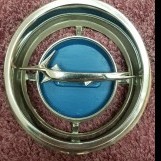


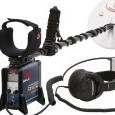
.thumb.jpg.ac5e8ee36e43bcab745dbc623fcf1874.jpg)



